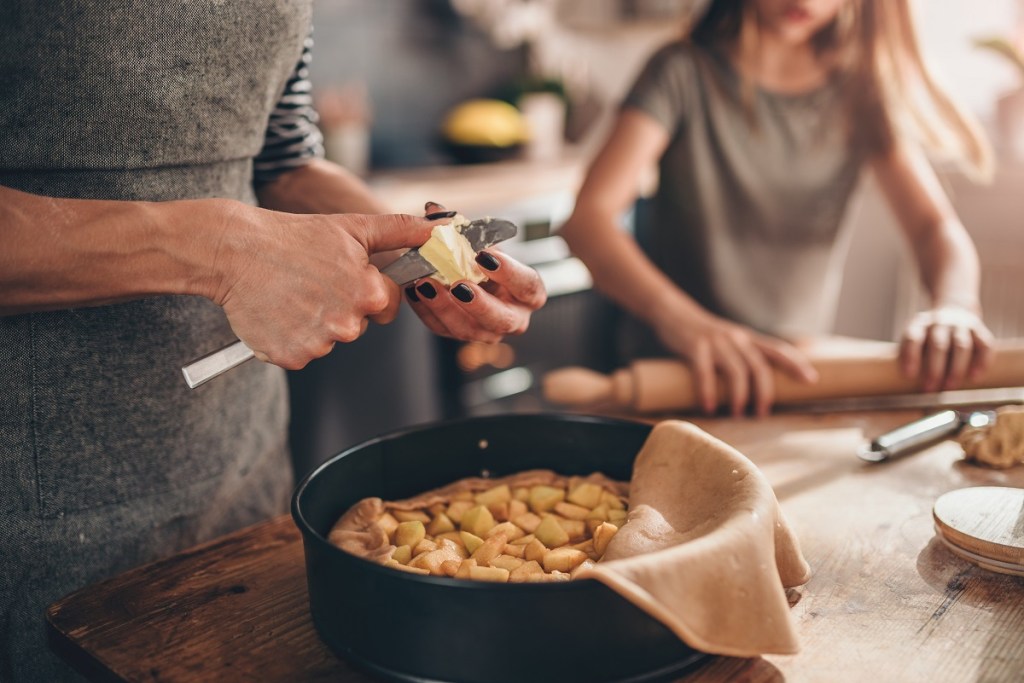Our Best Tips for Baking with Butter

Today we celebrate one of the best days of the year – World Baking Day! If ever we needed a good excuse to bake up a storm, this is surely it. There’s something about baking that we simply love – and it isn’t just the prospect of enjoying our favourite freshly baked treats. Baking allows us to express our creativity, escape from our crazy schedules and bond with our loved ones. Baking is fun! But every now and then we find ourselves facing a baking conundrum, unsure of which expert advice to follow – especially with so many conflicting opinions on the web. Which is why, this World Baking Day, we wanted to share some of our top tips and tricks to help you bake better with butter.
Salted or unsalted
Baking recipes often include salted or unsalted butter, but does it really matter which one you use? The long and short of it is that, yes, it does. Using salted butter when the recipe calls for unsalted (or vice versa) can throw out the salt level and flavour of the dish. Which is why it’s best to use whichever butter the recipe calls for. But what can be done if the recipe says unsalted when all you’ve got is salted, or vice versa? The solution is quite simple: either increase or decrease the amount of salt in the recipe by 1/4 teaspoon for every 1/2 cup of butter.
Temperature considerations
- For cookies: When making cookie batter, always use butter at room temperature. Cold, hard butter may give the cookies an unpleasantly tough texture.
- For scones: It’s best to use cold butter when making scones. We recommend grating frozen Kerrygold butter into little bits that you can incorporate into the flour while the butter is still nice and cold.
- For pie crusts and pastries: Always use cold butter when making a pie crust or pastry so that it doesn’t melt before baking. In the oven, it’s the butter that melts to form those delightful flaky layers.
- For cakes and cupcakes: Cakes and cupcakes are airy and moist when made with soft butter. With that being said, softened butter should still be firm enough to leave a slight indentation when touched lightly – it shouldn’t be squishy or oily.
- For breads, brownies and muffins: Use melted butter in recipes that require gentle mixing such as quick loaf breads, brownies and muffins. Melted butter can also be used to give your brownies and cookies that coveted chewy texture.
Flaky pastries
Flaky pastry is dependent on to two simple factors. First, you should use premium quality butter like Kerrygold Pure Irish Butter. Because Kerrygold has a lower water content than other types of butter, there is less water to react with the flour, resulting in an extra flaky crust for your homemade pastries. The next big consideration is temperature. Always keep your working surface, utensils and ingredients as cold as possible so that the butter doesn’t melt into the flour while you are working it in.
Velvety soft treats
When it comes to making melt-in-the-mouth cookies, butter just can’t be beat. This is because it coats the starches within the cookie batter, resulting in a more delicate crumb. Because Kerrygold has a high butterfat content and is made from pure and creamy milk, your biscuits and shortbread will also turn out more velvety, rich and creamy.
Light and fluffy icing
Great quality butter spells the difference between icing that is average or sublime. We’re sure many bakers around the globe will agree: there is no true substitute for real butter – especially when it comes to a beautiful buttercream frosting! To ensure a light and fluffy icing for your home baked goodies, simply cream softened Kerrygold butter and icing sugar together.
General butter baking tips
Here are a few good butter tips to keep in mind for your next big bake:
- Never defrost butter in a microwave on high heat as this destroys the emulsion. Rather grate the butter with a cheese grater or cut it into pieces with a pastry cutter to bring it to room temperature evenly.
- Butter should always be stored in the fridge, sealed and separated from other fridge items with strong smells such as onion and garlic.
- Recipes call for butter in a number of ways – by the stick, cup, tablespoon or ounce. As a rule, one stick of Kerrygold butter equals one cup, 16 tablespoons or 8 ounces.
- The best ingredients lead to the best baking results. As far as possible, use Kerrygold instead of shortening, spreads or margarine.